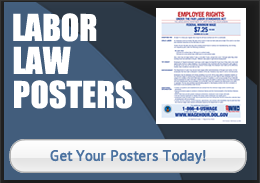Complete Story
03/22/2023
Supervision’s Adam Danielson Talks about the Growing Need for Fleets to Identify High-Risk Drivers
Source: Fleet Management Weekly
Fleet Management Weekly recently had the opportunity to interview Adam Danielson, Director of Business Development, Supervision, a part of Solera Fleet Solutions. The company is a leader in providing fleet-safety solutions that permit effective fleet oversight, keep drivers safe, and reduce corporate risk and liability. Here are some of the highlights of his comments.
There are continually growing challenges for today’s fleet, risk and safety managers. One is the dramatic increase in post-COVID vehicle crashes, injuries, and fatalities. Driving distraction remains a tenacious cause of accidents. Finally, the costs for companies facing driver-related negligent entrustment or vicarious liability judgments grow every year.
Today’s companies with fleets must invest in a comprehensive safety program that identifies high-risk drivers, corrects risky driver behaviors, and monitors overall fleet risk to mitigate exposure to these threats.
Risk Identification
With continuous license monitoring and other risk identification programs like the advanced program we at Supervision offer, fleet management professionals can rest assured that their employers stay in front of increased risk by identifying and remediating individuals who demonstrate risky behavior.
The first step in an integrated program is risk identification. No company can make changes, improve performance, or create a safer culture without being able to identify where it is vulnerable. Looking at the many types of risks, the number of drivers who are high risk, and the degree of exposure across the entire fleet, many companies find unacceptably high numbers and inordinate exposure. Supervision has seen that 7% of fleet drivers on average are driving with a suspended license. Worse, approximately 75% of those folks continue to drive with a suspended license.
Unfortunately, legacy safety requirements such as pulling a motor vehicle record on an annual basis leaves companies blind to undue risk that may affect the other 364 days in between MVR checks. For most of the year liability exposure and driver safety are compromised.
We see that 39% of suspended drivers are still driving despite non-driving-related issues, including unpaid fiduciary responsibilities of parking tickets, tuition, child support, and so on, that can be hidden to the company.
The Cost of ‘Not Knowing’
What is the risk of not knowing – every day – a company’s safety shortfall? We have found crash rates 14 times higher than average for those driving with suspended licenses. A company also misses the patterns from a violation perspective.
The bottom line is that companies must be able to answer these questions 365 days a year:
• Does every driver have a valid driver’s license?
• Do they have a high frequency of speeding violations or poor driving habits?
Once these questions can be answered in the affirmative, a fleet or safety manager can confidently identify risk and take commensurate action that includes rehabilitation and training of risky drivers.
Continuous Monitoring Leads to Action
When fleet managers identify the level of risk that they are tasked to manage, they can marshal all the components of a comprehensive solution. Continuous license monitoring is the start, as previously mentioned, but the results must lead to specific action with each risky driver whether that be training, re-purposing, or other actions specified in the company’s driver policy.
Supervision encourages companies to layer in some of the other mechanisms that support a safety culture. For example, initiating driver coaching is our suggested course of action. This combines training as part of a formal Learning Management System, or LMS. This allows a company to specify the identified risk and build a comprehensive solution to address. This approach is a proven way to rehabilitate the driver.
More than ever, fleet managers must align fleet safety with risk mitigation and contribute to the company’s culture of safety. Building such a culture feeds upon itself in the company’s driver policy, training, manager involvement, and executive attention. A unified commitment to safety ensures that all employees are being good stewards of a safety culture.
Looking Beyond Data Collection
While technology is allowing companies to collect more and more data, we believe that fleet managers must focus on new and better ways to use that data and make it actionable. At Supervision, we see that a comprehensive safety solution must integrate multiple data points, or layers — continuous license monitoring; CSA monitoring for regulated fleets; how the drivers are performing in a variety of criteria; how the fleet is performing compared to defined goals. That information permits the creation of trending analyses as well as prioritizing remediation of individual drivers based on degree of risk.
Looking at some of the layers of data to be analyzed, we can start with the telematics layer. There’s a driver performance layer defining how the person operates the vehicle. There’s the inspections data layer and, of course, the continuous license monitoring data. So, a company must take all of these data points and create a comprehensive risk score that’s simple and straightforward to understand.
Supervision offers multiple types of solutions that ensure a holistic approach that gives a company insight into identifying high-risk drivers, predicting risk, and mitigating exposure. The result is a foundation for a circular safety culture. We give clients a measured approach so that they can best manage the critical data.





